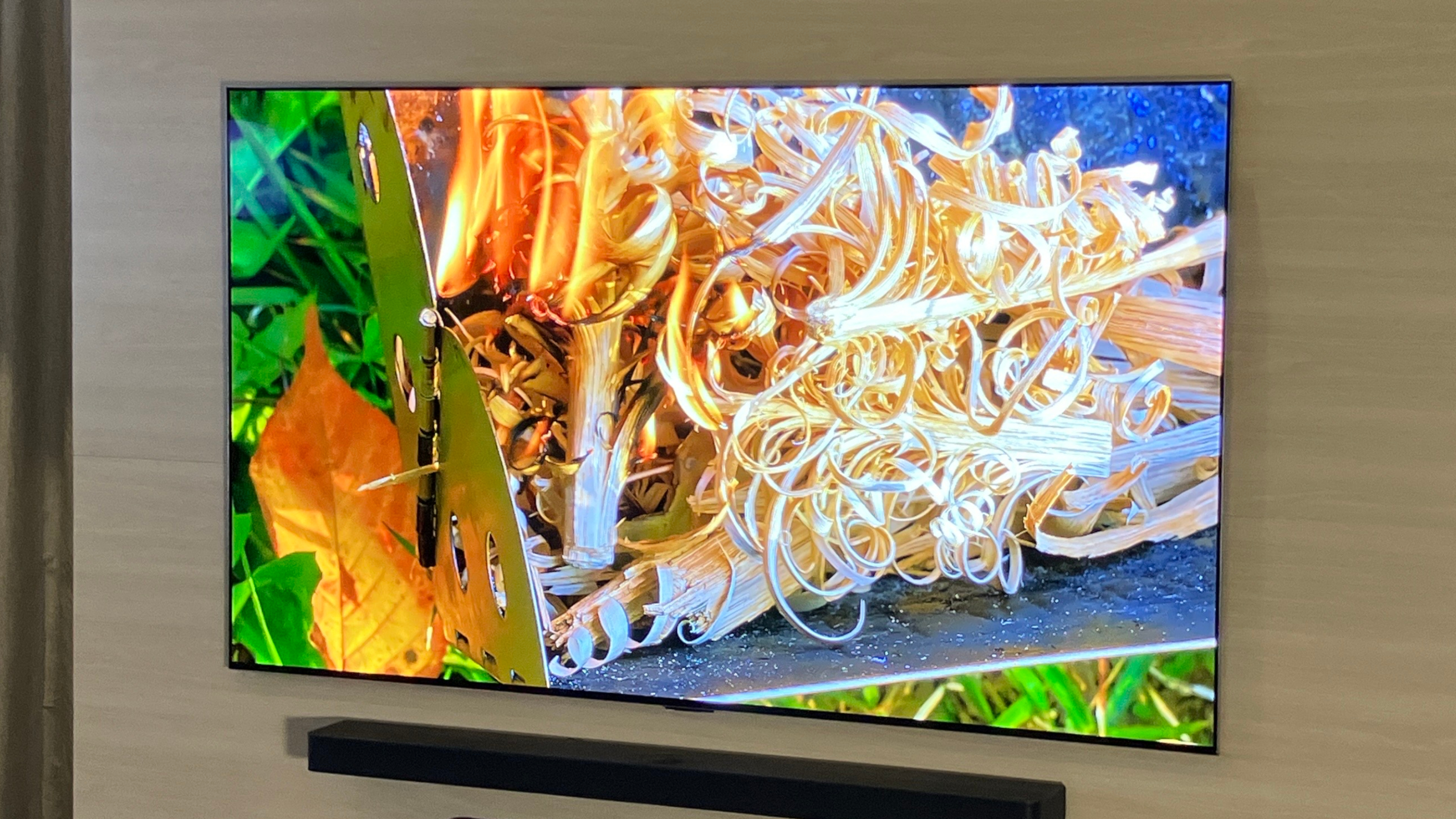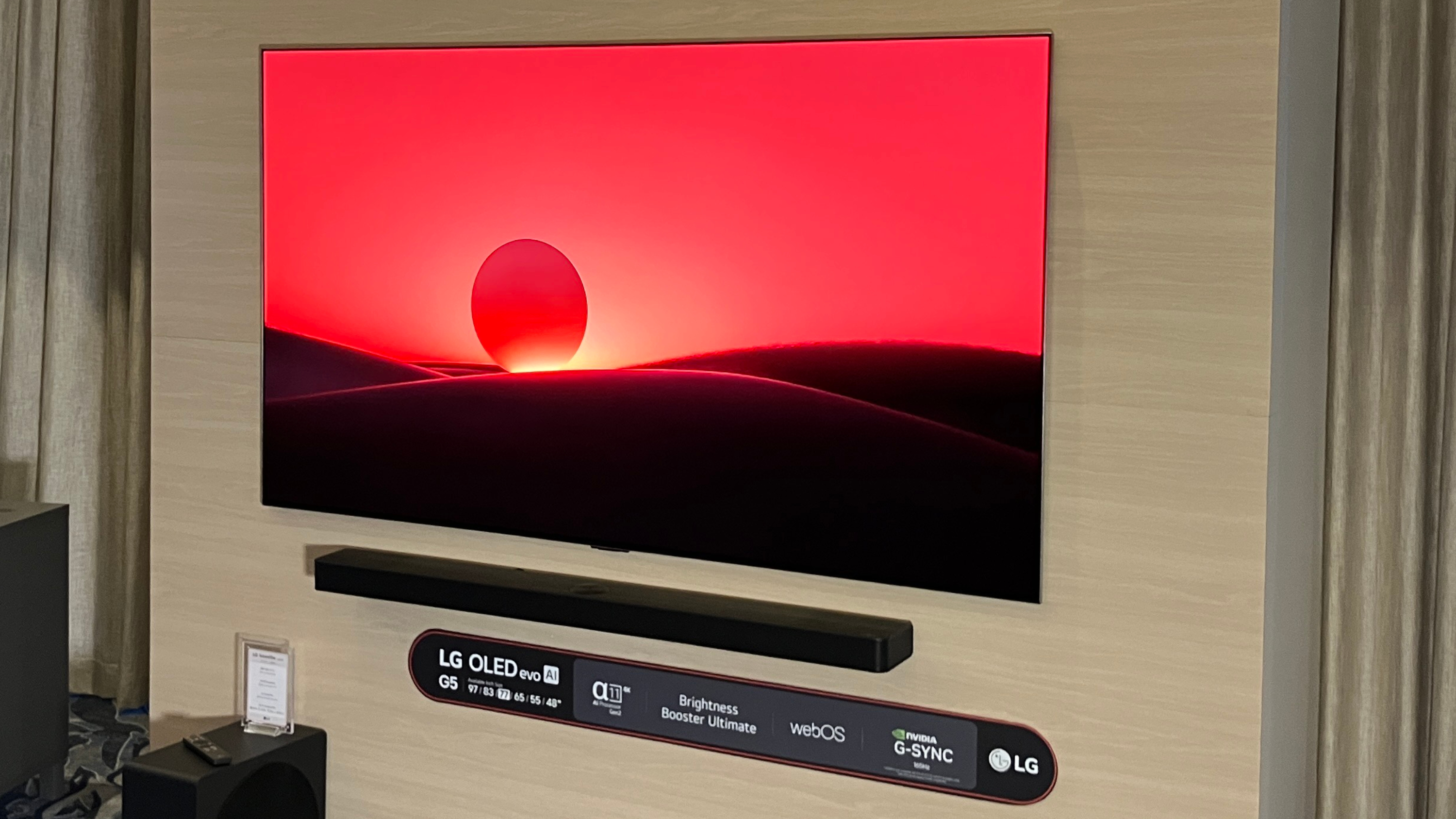I just tested the LG G5 OLED TV — and the results blew me away
LG's Brightness Booster Ultimate is working overtime

In the more than eight years I’ve been doing technical testing on TVs, I have seen some significant performance improvements. Even so, those most expensive TVs are often the most arresting, and this year’s LG G5 OLED is no exception.
The flagship set in LG’s OLED line isn’t cheap — expect the 65-inch model to run you about $3,330 (and that’s on sale) — but it boasts lots of updates to picture processing and general performance in all areas.
Don't get me wrong, the tweaks to its webOS operating system, Magic Remote, and AI features are nice, but with a TV, what’s on the screen is ultimately all that matters. And what’s on the screen here is over 2,000 nits of brightness — some of the highest brightness I’ve ever seen on a WOLED TV.
Brightness by the numbers
| Row 0 - Cell 0 | LG G5 | LG C5 | LG G4 | Samsung S95F |
SDR Brightness (10%, in nits) | 510 | 335 | 358 | 1004 |
Delta-E (lower is better) | 1.99 | 1.25 | 1.4 | 1.19 |
Rec. 709 Gamut Coverage | 99.69% | 99.67% | 98.55% | 106.87% |
HDR Brightness (10%, in nits) | 2296 | 1165 | 1488 | 2286 |
UHDA-P3 Gamut Coverage | 99.63% | 99.45% | 97.29% | 99.95% |
Rec. 2020 Gamut Coverage | 82.57% | 72.27% | 72.91% | 90.47% |
Input Lag (ms) | 12.9/9.2 (Boost) | 12.9/9.2 (Boost) | 12.9/9.2 (Boost) | 9.5 |
The one-step-down LG C5 OLED I looked at a couple of months ago gave me an idea of what to expect, but even by its standard, the G5 goes all out on brightness.
The G5 registered nearly twice as bright with HDR content as the C5 — 2,296 nits versus 1,165
In our tests, which we ran using a set’s default picture modes, the G5 registered nearly twice as bright with HDR content as the C5 — 2,296 nits versus 1,165. And that was in Filmmaker Mode, generally considered the closest to out-of-the-box calibrated quality.
LG touts the G5’s unique “Brightness Booster Ultimate” feature as being responsible for this, and the set’s advanced new antiglare coating can only amplify the effect further. It can be hard to pinpoint the specific impact features like these have on performance, but I can verify that they helped the G5 live up to LG’s lofty claims.
Beyond making the G5 one of the very brightest OLED TVs I’ve ever seen, and something you can feel good about watching under just about any conditions, they can also have a dramatic impact on what you’re viewing: Because OLEDs turn off their pixels when they’re not in use, resulting in perfect black, dark details can sometimes get “crushed,” making shadowy or more subtle parts of the picture harder to discern. But that’s hard to find on sets like the G5, which are bright enough to compensate.
Get instant access to breaking news, the hottest reviews, great deals and helpful tips.
Full-color accuracy without any compromises

Dune: Part Two contains a number of silhouette-heavy scenes where this can be a problem, but I never saw it. Similarly, black-and-white scenes in that movie and the Oscar-winning Oppenheimer can lose distinction or feel a bit muddy when the contrast with the lighter sections of the screen isn’t as pronounced as it should be. That never came up, either. All I saw were scenes that were just as vibrant as those filmed (or animated) in full color.
Increased brightness also make colors pop more, too, of course, and palette-busting films like Barbie, Spider-Man: Across the Spider-Verse, The Super Mario Bros. Movie, and Wicked only benefited.
And though I hadn’t expected to see an improvement in my long-running playthrough of Indiana Jones and the Great Circle, the G5 also brought out fresh nuances in the design of the caverns, tombs, and dark recesses that define the look and feel of that exciting adventure game.
Will its high levels of brightness make the G5 the perfect OLED TV for every shopper? No, not exactly. And its price is certainly a bit off-putting.
This set may not be the best choice for everyone, but one thing is inarguable: The technical changes LG has made on the back end ensure that the G5 is here to compete — and possibly even beat — the flagship Samsung S95F OLED with its award-winning QD-OLED screen.
But for a more further deep dive into that, you’ll have to wait for my full review of the TV, which Tom’s Guide should be publishing soon.
At the head of LG's OLED 4K TV lineup is the G5. It's one of the brightest WOLED TVs we've tested and gamers will enjoy class-leading gaming features, including four HDMI 2.1 inputs that support 4K gaming at 120Hz or 144Hz, VRR, FreeSync, G-Sync compatibility, and LG's Game Optimizer mode. Simply put, it's one of the best TVs ever made.
More from Tom's Guide
Matthew Murray is the head of testing for Future, coordinating and conducting product testing at Tom’s Guide and other Future publications. He has previously covered technology and performance arts for multiple publications, edited numerous books, and worked as a theatre critic for more than 16 years.
You must confirm your public display name before commenting
Please logout and then login again, you will then be prompted to enter your display name.


